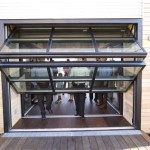How To Transform Your Garage Into A Functional Home Gym
Creating a home gym offers a convenient and personalized fitness solution, eliminating travel time and gym membership fees. The garage, often underutilized, presents an ideal space for this transformation. Successfully converting a garage into a functional home gym involves careful planning and execution, taking into account space optimization, budget considerations, and personal fitness goals.
Assessing and Preparing the Garage Space
Before purchasing any equipment, a thorough assessment of the garage space is crucial. This involves measuring the dimensions of the garage to determine the available square footage. Take note of the height of the ceiling, particularly if planning to incorporate exercises that require vertical space, such as overhead presses or pull-ups. Identifying any obstructions, such as support beams, piping, or electrical boxes, is also essential.
Cleaning and decluttering the garage is the next step. Remove all existing contents and thoroughly clean the floor. Consider the condition of the existing flooring. Bare concrete can be cold and uncomfortable for certain exercises. Options for flooring upgrades include rubber mats, interlocking foam tiles, or even a poured epoxy coating. Rubber mats provide excellent shock absorption and are ideal for weightlifting areas. Interlocking foam tiles are a more affordable option and offer cushioning for floor exercises. Epoxy coatings offer a durable and aesthetically pleasing surface but require professional installation.
Adequate ventilation and lighting are critical for a comfortable and safe workout environment. Ensure the garage door can be opened for ventilation, especially during intense workouts. Supplementing natural light with artificial lighting is often necessary. Consider installing bright, energy-efficient LED lights to illuminate the entire space. Proper ventilation helps to reduce moisture build-up and prevent the growth of mold and mildew.
Electrical considerations are also important. Assess the existing electrical outlets and ensure they can handle the power requirements of any electrical fitness equipment, such as treadmills or ellipticals. If necessary, consider adding additional outlets or upgrading the electrical panel to accommodate the increased power demand. Having adequate and properly grounded electrical outlets is crucial for safety.
Selecting Essential Gym Equipment
Choosing the right equipment is paramount for achieving fitness goals within the home gym. The selection should align with personal exercise preferences and fitness routines. Prioritizing versatility and durability when making purchasing decisions is key.
A foundational piece of equipment for most home gyms is a quality weightlifting setup. This typically includes a power rack or squat stand, an Olympic barbell and weight plates, and adjustable dumbbells. A power rack provides a safe and versatile platform for performing various exercises, including squats, bench presses, and overhead presses. Investing in a durable barbell and weight plates will allow for progressive overload and continued strength gains. Adjustable dumbbells offer a space-saving alternative to a full set of fixed dumbbells and are suitable for a wide range of exercises.
Cardiovascular equipment is another important consideration. Options include treadmills, stationary bikes, elliptical trainers, and rowing machines. The choice depends on personal preferences and fitness goals. Treadmills are suitable for running and walking, while stationary bikes offer a low-impact cardiovascular workout. Elliptical trainers provide a full-body workout and are gentle on the joints. Rowing machines engage multiple muscle groups and provide a challenging cardiovascular workout.
Additional equipment that can enhance the home gym includes adjustable benches, resistance bands, stability balls, and yoga mats. An adjustable bench provides support for various exercises, such as bench presses and dumbbell rows. Resistance bands offer a versatile and portable option for strength training and rehabilitation exercises. Stability balls can be used for core strengthening and balance exercises. Yoga mats provide a comfortable surface for stretching and floor exercises.
When selecting equipment, consider the available space. Multi-functional equipment pieces, such as adjustable benches and power racks with attachments, can help to maximize space efficiency. Folding treadmills and stationary bikes can be stored away when not in use. Purchasing used equipment can be a cost-effective option, but it is important to carefully inspect the equipment for damage and ensure it is in good working condition.
Optimizing Space and Safety Considerations
Effective space optimization is crucial for maximizing the functionality of a garage gym. Proper equipment placement and storage solutions are key to creating a safe and efficient workout environment.
Begin by designating specific areas for different types of exercises. Create a weightlifting area, a cardiovascular area, and a stretching/floor exercise area. This helps to organize the space and prevent clutter. Position heavy equipment, such as power racks and weight benches, against walls or in corners to maximize floor space. Ensure there is sufficient clearance around each piece of equipment to allow for safe movement and exercise execution.
Storage solutions are essential for keeping the garage gym organized and clutter-free. Wall-mounted storage racks can be used to store weight plates, dumbbells, and resistance bands. Shelving units provide storage for smaller items, such as yoga mats, foam rollers, and water bottles. Vertical barbell storage racks can save space and prevent damage to barbells. Consider utilizing overhead storage solutions, such as ceiling-mounted shelves or racks, to store less frequently used items.
Safety is paramount when exercising in a home gym. Invest in safety equipment, such as spotter arms for power racks and weightlifting belts. Ensure proper form and technique when performing exercises to prevent injuries. Start with lighter weights and gradually increase the weight as strength improves. Warm up before each workout and cool down afterwards. Consider consulting with a qualified fitness professional to learn proper exercise techniques and develop a personalized workout plan.
Maintaining a clean and organized garage gym is essential for both safety and hygiene. Regularly wipe down equipment with disinfectant wipes to prevent the spread of germs. Sweep or vacuum the floor regularly to remove dust and debris. Ensure adequate ventilation to prevent moisture build-up and the growth of mold and mildew.
Furthermore, consider the ambient temperature. Garages can be significantly hotter in the summer and colder in the winter than the main house. A portable air conditioner or a space heater can help to regulate the temperature and create a more comfortable workout environment. Insulation can also help to maintain a more consistent temperature year-round.
Proper lighting is also a safety consideration. Ensure adequate lighting throughout the garage to prevent trips and falls. Consider installing motion-sensor lights for added safety and convenience. A well-lit garage gym is essential for performing exercises safely and effectively.
Finally, consider the noise level. Weightlifting and cardiovascular equipment can generate significant noise, which can be disruptive to neighbors or other members of the household. Consider using rubber mats to reduce noise and vibration. Playing music at a reasonable volume through headphones can also help to minimize noise pollution.

How To Turn Your Garage Into A Fitness Room

How To Turn Your Garage Into A Gym In 9 Easy Steps

How To Turn Your Garage Into A Fitness Room

I Built My Dream Garage Home Gym

Creative Diy Garage Gym Ideas To Maximize Your Space Trusscore

Man Turns 2 Car Garage Into Fully Kitted Out Home Gym

Home Gym In The Garage Bunnings Work Community

Our New Home Gym Separate Building In Backyard Nesting With Grace

Turn Your Garage Into A Home Gym

How To Turn Your Garage Into A Gym In 9 Easy Steps
Related Posts








